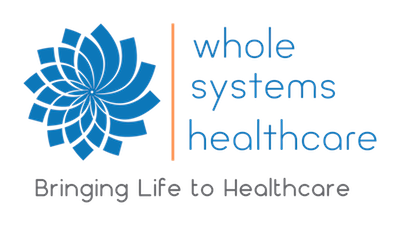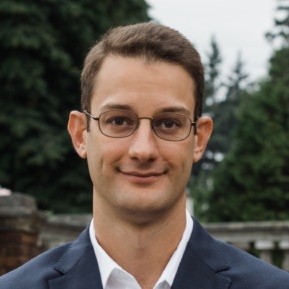Integrative health care brings conventional and complementary approaches together in a coordinated way. It emphasizes a holistic, patient-focused approach to health care and wellness—often including mental, emotional, functional, spiritual, social, and community aspects—and treating the whole person rather than, for example, one organ system. It aims for well-coordinated care between different providers and institutions.
NIH: National Center for Complementary and Integrative Health
While this is a beautiful vision, integrative medicine currently lacks a coherent framework for clinicians to make referrals across the entire health care spectrum, from managing acute illness to promoting sustained wellness. Integrative approaches are gradually making their way into conventional medical curriculums, but the value of referring across the spectrum of licensed complementary providers and how doing so would improve patient outcomes is rarely emphasized. This creates confusion around the roles that exist across an integrative healthcare model. This combined with cultural barriers around the topic of integrative medicine results in a majority of conventional providers referring within a purely symptom management model, instead of following through toward an integrative health restoration model.
For example, a family doctor trained and employed within a conventional healthcare model is most likely to recommend prescriptions and procedures that are effective at managing unwanted symptoms, but do not address the underlying cause of disease. There are multiple reasons contributing to this issue. First is training. For the past century, the standard medical school curriculum has required spending only a few days in four years discussing how nutrition affects wellness and disease progression, instead focusing on on lab tests, medication and surgery. Other evidence-based preventative approaches are barely acknowledged in conventional medical school, including exercise, mind-body medicine, nutritional supplementation, and many others.
Another major contributor is the conventional health insurance reimbursement model. Insurance is typically willing to reimburse doctors for about 15 minutes of care. After factoring in time spend on paperwork, charting, small talk, history taking, and physical exam, the doctor is left with about one minute to make recommendations to their patient. Given the severe time constraint, it goes without saying that the doctor will be far more concerned with addressing acute issues before spending precious time on preventative factors such as diet and lifestyle.
To make matters worse, the primary care shortage often results in scheduling weeks out, further limiting patient access. A 2018 Merritt Hawkins survey found the average wait time to schedule a new patient appointment with a family physician in the 15 metro areas is 29.3 days, up from 19.5 days in 2013. Once a patient finally establishes with a primary care provider, referrals most often occur only when concerning symptoms arise from within a specific organ system. This would most often result in a referral to a conventional specialist, such as a cardiologist, gastroenterologist, or oncologist. Specialists are highly trained to treat a specific organ system and their associated symptoms through a specialized symptom management approach, but with similar constraints on time spent with patients.
Improving Care through Integrative Medicine
The goal of an integrative healthcare model is to facilitate collaboration with providers that also treat the whole person, not just the unwanted symptoms. In doing so, conventional clinicians are able to manage concerning symptoms through a compartmentalized, standardized, reductionist approach, while complementary providers focus on treating the underlying causative factors of disease and promote health through a collaborative, individualized, holistic approach. Integrative providers take a systems-based approach to restoring health, instead of focusing just on symptom management, and often have more time to focus on dietary and lifestyle factors that may be contributing to disease. For example, instead of only referring to an oncologist to treat a malignant tumor (i.e., cancer), the patient might also be referred to a holistic healthcare provider that specializes in treating the person with cancer, with the goal of reducing unwanted side effects of conventional cancer treatment. In doing do, treatment outcomes are improved and longer term remission is supported by addressing the underlying causative factors of the tumor, and not just the tumor itself. There do exist primary care physicians that are trained and equipped to refer across this full spectrum of providers, including naturopathic physicians (NDs), integrative MDs, and others.
The Healthcare Continuum
We use the term whole systems in reference to a style of holistic modeling of systems in relation to the human being. A whole systems approach places reductionist and systems-based treatment methods on a continuum from acute problems to complete health, while providing multiscale context for the systems with which the person interacts in their treatment process and everyday lives. The whole systems approach begins with assessing where the person fits on the health–dysfunction–disease continuum, termed The Healthcare Continuum.

A reductionist approach is used to manage acute, life-threatening, or seemingly isolated issues. Once resolved, and relative stability has been established, a systems-based approach is used to help ensure lasting symptom resolution within a comprehensive healing process guided by collaborating clinicians. The Healthcare Continuum serves as a useful tool for understanding clinical roles that exist across the full spectrum of disease and wellness. It also helps illustrate the barriers and challenges that exists when attempting to motivate patients to shift from a symptom-based management to a health restoration approach.
Read about the Idealized Strategy Flow in part two of Our Model here.



